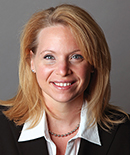- What Do Obstetric Patients Want in 2017? ASA and SOAP Address Achieving Patient Satisfaction, Safety and Provider Sanity (PN312)
- 1:10-3:10 p.m. Monday
- BCEC Room 153ABC
The birth experience is changing as mothers and families seek a more open and friendly environment involving all types of providers, including doulas and midwives. The role of anesthesiologists in this evolving environment will be examined during an interactive panel discussion Monday.
“The way we have interacted with patients on the obstetric floor is different than what midwives and other patient center services have,” said session moderator Heather C. Nixon, M.D. “It is time for obstetric anesthesiologists or people who participate in obstetric anesthesia care to understand more about what is going on in patient care on OB the floor.”

Heather C. Nixon, M.D.
The session will feature Dr. Nixon and four other anesthesiologists on a panel. They will use case scenarios to introduce a series of topics regarding birth plans, the use of anesthesia, cesarean deliveries, health initiatives being adopted by more hospitals and the role of other practitioners.
Panelists have experienced the scenarios, so they will explain their reactions, conversations with patients and the coordination of care. They will refer to research and recently published literature in their discussions and answer questions from the audience during each topic.
The session is a joint presentation of ASA and the Society for Obstetric Anesthesia and Perinatology. It also will examine the position of the American Congress of Obstetricians and Gynecologists on patient-centered care and joint decision-making with patients, said Dr. Nixon, Division Head of Obstetric Anesthesia and Associate Head of Education in the Department of Anesthesiology at the University of Illinois at Chicago
“We will be addressing patient concerns that are starting to emerge,” she said. “They feel they are being forced to have cesarean deliveries and they feel like they are on unnecessary medications. This has led a swing to patients wanting to deliver at home or in low-intervention centers. They are caring about who is going to be there to deliver and if their voices will be heard in that process.
“This will be a session where people can come to learn about how patients think and what kinds of situations they may encounter. They will get insight into how different institutions are handling these situations or adapting their culture to really deal with new patient expectations.”
Return to Archive Index